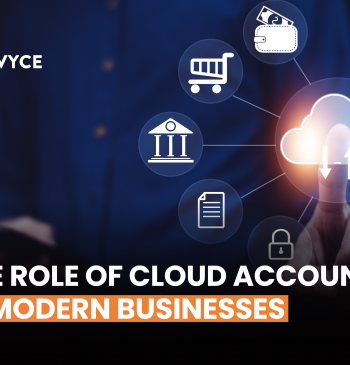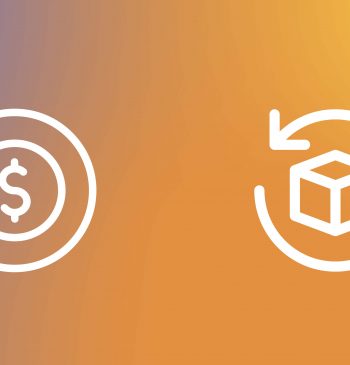05 Sep

Modern businesses operate in a rapidly changing environment, so digital transformation is a necessity, especially in accounting and finance. Finance teams are no longer confined to traditional number-crunching roles—they have become key factors in shaping business strategy.
Utilizing advanced digital tools is essential for maintaining a competitive edge and optimizing operations. This transformation extends further than the implementation of technology; it involves rethinking and improving how financial processes are managed.
In this article, we’ll explore into how digital transformation is reshaping accounting and finance, with a focus on practical strategies to improve efficiency and enable data-driven decision-making.
Automating Financial Processes
Manual data entry, invoice processing, and payroll management used to consume hours of valuable time. With automation, you can now handle these tasks more efficiently and with fewer errors. So, how can you make automation work for your finance team?
Start by identifying the most repetitive and time-consuming tasks. Tools like Robotic Process Automation (RPA) are perfect for automating these processes. For example, you can use RPA to streamline payroll, process invoices, or reconcile accounts. When you remove manual labor from these workflows, you not only speed up the process but also reduce the risk of errors. This leaves you with more time to focus on higher-value activities, like strategic planning and financial analysis.
Moreover, automating financial processes enables real-time reporting. You no longer need to wait for month-end to assess your company’s financial health. Instead, you can generate up-to-the-minute reports that provide a clear picture of your organization’s performance. This makes it easier to identify trends, opportunities, and risks, allowing you to make more informed decisions faster.
Cloud Technology
Cloud-based systems are no longer just storage solutions; they’ve change how finance operates. By utilizing cloud technology, you can access your financial data from anywhere, at any time, which adds flexibility to your operations. But how do you ensure you’re maximizing the benefits of the cloud?
The key is seamless integration. When moving to the cloud, ensure that your accounting software connects with other tools your team uses. This creates a unified system where data flows smoothly between departments. For instance, integrating your cloud platform with CRM software allows you to pull real-time sales data directly into your financial reports. This integration streamlines workflows and eliminates the need for manual data entry.
Cloud technology also offers scalability. As your company grows, your financial system can scale with you, adding new features and storage without a large upfront investment in hardware. This flexibility ensures that your finance operations can keep pace with your company’s growth without bottlenecks. Plus, cloud platforms offer improve security with features like multi-factor authentication and encryption, keeping your sensitive financial data safe.
Artificial Intelligence in Forecasting
Artificial intelligence (AI) is transforming the way finance teams approach forecasting. Instead of relying on historical data alone, AI allows you to process real-time information and create more accurate financial models. But how do you implement AI in your forecasting processes to get the best results?
Start by using AI to identify patterns in your data that might not be immediately obvious. For example, AI can analyze customer purchasing behaviors, market trends, and even external economic factors to help you make more accurate revenue forecasts. The insights gained from AI-driven forecasting allow you to make proactive decisions, such as adjusting pricing strategies or reallocating resources to capitalize on emerging opportunities.
AI also enables scenario analysis, helping you understand the potential impact of different financial decisions before you make them. By running various “what-if” scenarios, you can evaluate the effects of market fluctuations, changes in customer demand, or unexpected costs on your bottom line. This helps you mitigate risks and make smarter financial choices.
To make the most of AI in your finance department, start by automating smaller, repetitive tasks like expense tracking. Once you’ve successfully integrated AI into those processes, gradually move on to more complex forecasting and financial modeling.
Blockchain
Blockchain technology offers a secure and transparent way to manage financial transactions. However, to fully benefit from blockchain, you need to understand how to integrate it into your financial operations effectively.
Blockchain works by creating an immutable ledger of transactions, meaning once a transaction is recorded, it cannot be altered. This is particularly useful for audit trails and compliance, as it provides a tamper-proof record of every transaction. In industries with high regulatory standards, such as banking or healthcare, blockchain ensures that all financial data is accurate and verifiable.
Using blockchain also speeds up the reconciliation process. Traditional reconciliation can take days, especially for international transactions, but with blockchain, it’s nearly instantaneous. This reduction in processing time leads to greater efficiency and cost savings.
Implementing blockchain in your finance department builds trust with internal teams and external stakeholders. Because everyone can view the same transaction data in real-time, there’s no need for third-party verification, reducing the risk of fraud and increasing transparency.
Real-Time Data Analytics
Having access to real-time financial data allows you to make smarter, faster decisions. But how do you turn data into actionable insights that improve your company’s financial performance?
The answer lies in focusing on the right metrics. Real-time analytics tools provide instant access to key performance indicators (KPIs) like revenue, cash flow, and operational costs. By continuously monitoring these metrics, you can adjust your strategies in response to real-time data, rather than waiting for monthly or quarterly reports.
For instance, if you notice that operational costs are rising unexpectedly, real-time data allows you to quickly pinpoint the source of the issue and take corrective action. Whether it’s renegotiating contracts or reallocating resources, you’ll be able to address challenges before they impact your bottom line.
Real-time analytics also enable better long-term planning. By analyzing trends in revenue growth or customer behavior, you can make more informed decisions about future investments or market expansions. To maximize the value of real-time analytics, integrate your data sources—such as your accounting software, CRM, and ERP systems—so that you get a complete view of your financial landscape.
Digital Reporting
Digital tools have changed financial reporting, making it faster, more accurate, and more interactive. But how can you enhance your reporting processes to deliver better insights?
The key is automation. By automating the data collection process, you can generate reports in real-time, eliminating the risk of human error. Automated reporting also allows for customization—whether to executives or detailed breakdowns to department heads, digital reporting tools can tailor the information to your audience’s needs.
Interactive dashboards are another powerful feature of digital reporting. These dashboards allow stakeholders to drill down into the data, exploring specific areas like revenue streams, expenses, or operational efficiency. This level of detail and customization gives decision-makers the ability to act on real-time insights rather than waiting for static reports.
Moreover, digital reporting enables better compliance and audit readiness. With data automatically pulled from multiple systems, reports are consistently up-to-date, ensuring that you’re always prepared for regulatory reviews. Automation also saves valuable time during audits, as you can easily retrieve any required financial documents or reports, giving auditors a clear, transparent view of your financials.
By incorporating digital reporting tools into your financial processes, you not only improve accuracy but also make your data more actionable, paving the way for faster and more informed business decisions.
Conclusion
Digital transformation is reshaping accounting and finance, moving beyond traditional roles and making finance teams key strategic partners in driving business success. From automating repetitive tasks to leveraging AI for accurate forecasting, cloud technology for flexibility, blockchain for security, and real-time analytics for better decision-making, these tools empower finance professionals to operate more efficiently and intelligently.
Marjina Muskaan has over 5+ years of experience writing about finance, accounting, and enterprise topics. She was previously a senior writer at Invyce.com, where she created engaging and informative content that made complex financial concepts easy to understand.
Related Post
Copyright © 2024 – Powered by uConnect



Marjina Muskaan